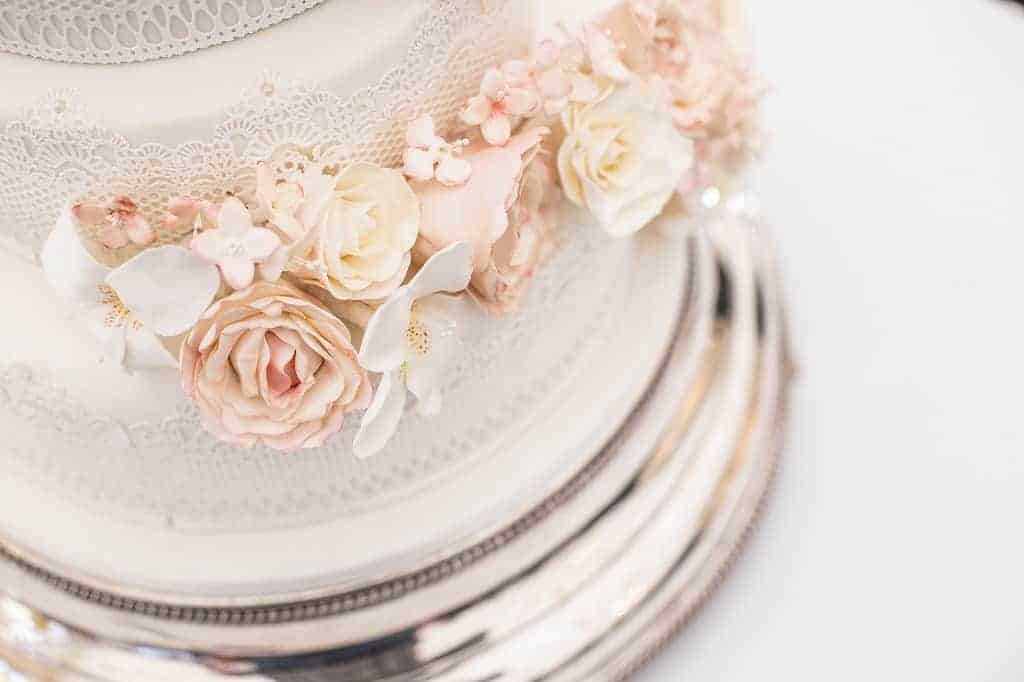The cake is an iconic part of any wedding celebration, whether you’re opting for a simple design or an elaborate, celeb-worthy wedding cake. Designs may get more alternative as the years go by, but one fact remains – the wedding cake matters. Here, we take a closer look at the traditions associated with the wedding cake so you can understand the meaning behind this sweet treat.

The history of the wedding cake
Wedding cakes weren’t always a sweet treat to keep you and your guests going well into the night. Wedding cakes are thought to have been popularised during Roman times. Back then cakes weren’t fancy and were not even eaten by the guests. The cake was made from wheat or barley and instead resembled a loaf.
These traditional cakes were a far cry from the tiered, sophisticated designs you see at weddings today. This cake was used at the ceremony, with a portion of the bread broken over the bride’s head to represent the groom’s dominance over this new wife.
It wasn’t until the medieval times that wedding cakes were fed to guests. During this period, wedding cakes were representations of opulence but they could also seal a marriage’s fate as SBS Australia describes:
“The next possible step comes from medieval Britain, where devouring cake was preferred over crumbling it. Consuming a whole pile of cakes and baked goods was obviously even better. Just-married duos would kiss over a stack of buns — and if it didn’t fall over, good luck would follow.”
It was during the 19th century where the cake traditions we rely on today were cemented. Wedding cakes were sweet – rather than savoury. Mincemeat pies were used as wedding cakes from 17th century up to this date. Cakes also began to take the tiered form we’re familiar with.
The origins of cutting the cake
The wedding cake isn’t just there to look pretty. One wedding tradition that we all know is cutting the cake. It has a similar status to the first kiss, the first dance, and the tossing of the bride’s bouquet. But it’s more than just a cute moment that has to be captured for your wedding album.
The original Roman tradition of breaking bread on the bride’s head has been reimagined for the modern day. The cutting of the cake represents the loss of the bride’s virginity as well as being the first duty the newlyweds undertake together.
More wedding cake traditions
The cutting of the cake isn’t where the traditions end. After the cake cutting ceremony, feeding each other has become a popular second act. But there is a hidden meaning to this sweet, romantic and rather messy custom. The act is meant to symbolise the commitment, love and affection couples have for one another.
For years saving the top tier was a cake tradition many couples followed. As a result, most cake designs featured a top tier made of traditional, rich, and boozy fruit cake. This recipe meant that the top tier could be preserved for a long period of time, with its taste getting better with age. The cake would then be eaten on their first wedding anniversary or at the christening of their first child as a charming nod to their wedding day.
One wedding cake tradition that is thankfully losing favour is the act of sleeping with a piece of cake under your pillow. Dating back 300 years, small pieces of cake were given to guests as favours. Guests would then go home and sleep with the cake with a hope that they’d dream of their future partner that very night. Thankfully, candles are a more popular favour for 2019!
